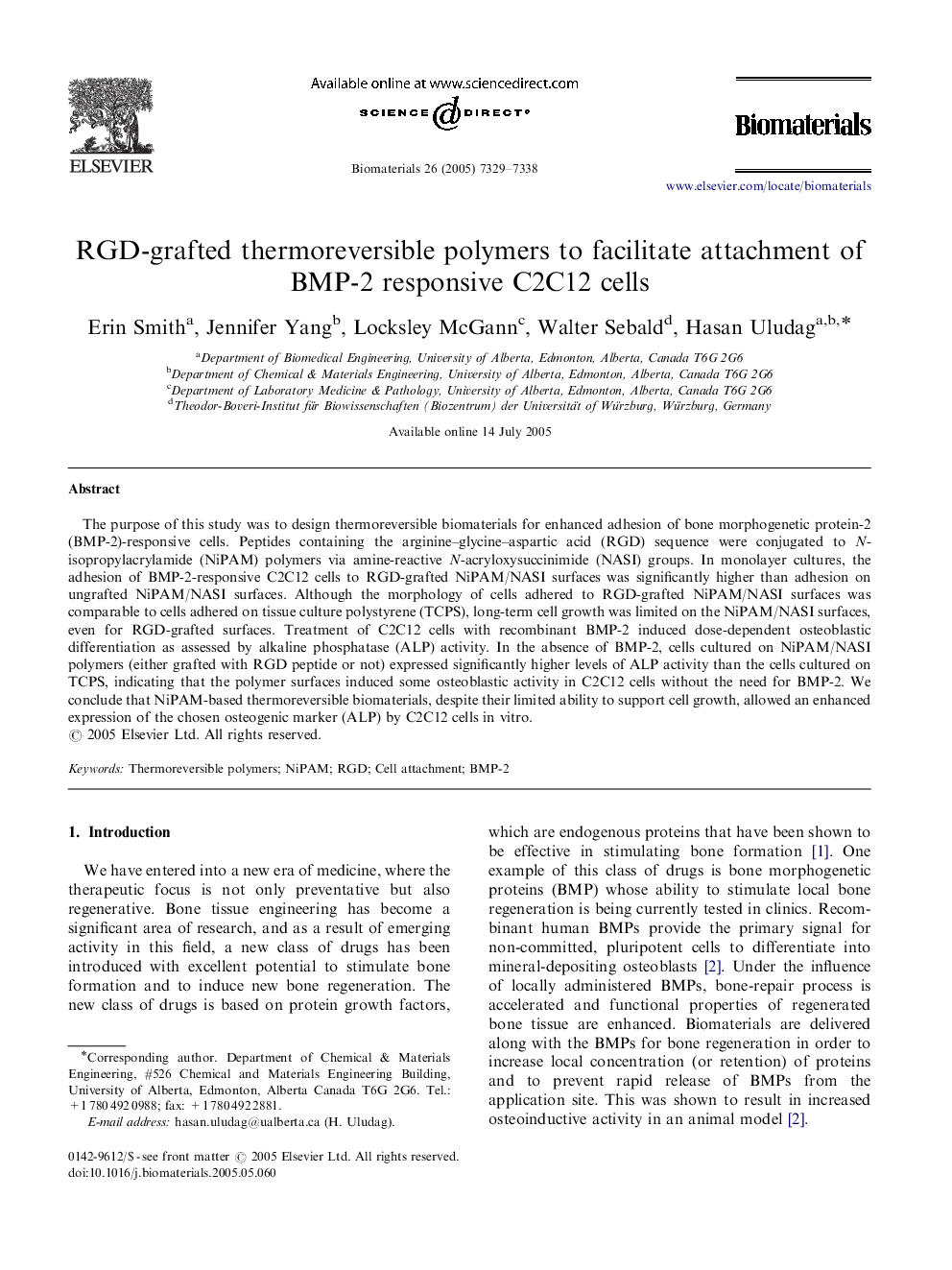| Article ID | Journal | Published Year | Pages | File Type |
|---|---|---|---|---|
| 10903 | Biomaterials | 2005 | 10 Pages |
The purpose of this study was to design thermoreversible biomaterials for enhanced adhesion of bone morphogenetic protein-2 (BMP-2)-responsive cells. Peptides containing the arginine–glycine–aspartic acid (RGD) sequence were conjugated to N-isopropylacrylamide (NiPAM) polymers via amine-reactive N-acryloxysuccinimide (NASI) groups. In monolayer cultures, the adhesion of BMP-2-responsive C2C12 cells to RGD-grafted NiPAM/NASI surfaces was significantly higher than adhesion on ungrafted NiPAM/NASI surfaces. Although the morphology of cells adhered to RGD-grafted NiPAM/NASI surfaces was comparable to cells adhered on tissue culture polystyrene (TCPS), long-term cell growth was limited on the NiPAM/NASI surfaces, even for RGD-grafted surfaces. Treatment of C2C12 cells with recombinant BMP-2 induced dose-dependent osteoblastic differentiation as assessed by alkaline phosphatase (ALP) activity. In the absence of BMP-2, cells cultured on NiPAM/NASI polymers (either grafted with RGD peptide or not) expressed significantly higher levels of ALP activity than the cells cultured on TCPS, indicating that the polymer surfaces induced some osteoblastic activity in C2C12 cells without the need for BMP-2. We conclude that NiPAM-based thermoreversible biomaterials, despite their limited ability to support cell growth, allowed an enhanced expression of the chosen osteogenic marker (ALP) by C2C12 cells in vitro.
